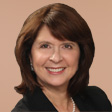Caregiving Teams Help Friends in Need
Local volunteer networks can assist those who need help with medical care.


You are booked for outpatient surgery and have no one to drive you home from the hospital. Or even worse, you’re facing a prolonged serious illness, and you need a lot more help than a friend or relative can provide. Perhaps you can turn to a relatively new model of caregiving: a network of volunteers who join forces to lend you a hand.
Several years ago, when Lynn Richards needed hip surgery, she tapped into the Caring Collaborative of the East Bay/San Francisco. The collaborative is an all-volunteer service of the San Francisco Bay Area chapter of The Transition Network, a national membership organization for women ages 50 and older.
Richards, who lives alone in Berkeley, Cal., says she gave the Caring Collaborative’s coordinator a schedule of the help she would need over the projected four weeks of her recovery. The coordinator sent an e-mail bulletin to the collaborative’s 25 or so members—many of whom Richards, now 72, did not know.
From just $107.88 $24.99 for Kiplinger Personal Finance
Become a smarter, better informed investor. Subscribe from just $107.88 $24.99, plus get up to 4 Special Issues

Sign up for Kiplinger’s Free Newsletters
Profit and prosper with the best of expert advice on investing, taxes, retirement, personal finance and more - straight to your e-mail.
Profit and prosper with the best of expert advice - straight to your e-mail.
Caring Collaborative members, as well as Richards’ friends, assumed numerous tasks. One volunteer took notes when a visiting nurse described the exercise, care and medication regimen she would need to follow. Others cooked meals, ran errands and walked with her outside while she struggled on crutches. “It was just life-saving, both physically and emotionally,” says Richards, a retired program developer for a nonprofit. She hired someone to help her bathe and clean the house.
There’s nothing remarkable about accompanying a friend to the doctor or taking a meal to a neighbor after surgery. But as baby boomers age, they are creating more-structured systems of volunteer caregiving. These new models can be a godsend for older people who live alone, as well as for overtaxed spouses and adult children. “For the primary caregiver, there’s a sense of relief—‘Oh, I can breathe again, it’s not all on me,’ ” says Sheila Warnock, president of the nonprofit Share the Care, which instructs friends, relatives, neighbors and others on how to create a “caregiver family” to help someone with a long-term or grave medical condition.
The Transition Network’s Caring Collaboratives are designed to step in when a member needs occasional help or, as with Richards, some aid over a short period of time. Of the network’s 13 chapters, four have set up Caring Collaboratives: San Francisco’s Bay Area, New York City, Long Island, N.Y., and Philadelphia.
About half of the 600 members of New York City’s chapter belong to its collaborative. New members must attend an orientation to learn the rules for seeking and offering help, says Barbara Stahura, the chair of the chapter’s Caring Collaborative committee. When a member wants to schedule help—perhaps she’ll need a ride home after a colonoscopy—she can e-mail the care coordinator, who looks for a willing volunteer.
The New York City collaborative also has created 15 “neighborhood groups” of a dozen or so women who meet occasionally in someone’s home. “If you feel closer to these women, you may feel comfortable to pick up the phone when you need help,” Stahura says. The Transition Network offers a guide for community groups that want to create their own caring collaborative.
Creating a Village of Caregivers
To help someone with a serious illness, friends could create a Share the Care group. Warnock wrote the book Share the Care (Fireside, $17) with Cappy Capossela after their friend Susan Farrow died of cancer in 1991. For more than three years, a large group of friends, neighbors and co-workers took care of Farrow, a divorced mother of two—running errands, checking her in and out of hospitals, supervising a home health aide and even organizing her daughter’s wedding.
In early 2002, Capossela was diagnosed with brain cancer, and Warnock put their book’s guidelines to work. “We ran her entire life,” she says. “It was very intense.” Capossela died later that year, and Warnock created the nonprofit, which, besides offering advice to individual caregivers, conducts workshops for health providers and faith groups.
A Share the Care group follows detailed rules on organizing the team and keeping it going. You can download the information from the website, or you can buy the book.
Ron Stevenson, 76, who lives in Gaithersburg, Md., has organized three Share the Care groups. The core members of each caregiving team—and the beneficiaries of their help—belonged to a large running group in the Washington, D.C., area. Two friends were diagnosed with terminal cancer. The third Share the Care group in 2011 cared for a married couple who were injured in a car accident.
Following the book’s instructions, Stevenson and his wife, Pam, set up an initial meeting between the patients and the Share the Care group. “They talk about their illness and their feelings,” Stevenson says. “It’s pretty powerful stuff.” Each group ranged from about 30 to 100 volunteers.
Every Sunday, the captain for the week called the patient or spouse to see what was needed—and then assignments were issued, such as fixing dinner, doing laundry or just hanging out. Stevenson kept a spreadsheet. “Nobody gets wiped out by having to do everything,” says Stevenson.
When his friend Charlie Roberts was diagnosed with cancer, Stevenson asked Roberts’ wife if he could form a group to help her out. The group included members of their running group and Roberts’ friends from his Veterans of Foreign Wars post. The vets built a wheelchair ramp, mowed the lawn, took him to the hospital and spent the night. Eventually his wife hired a full-time aide. Roberts died in 2007.
Local governments are also looking to collaborative caregiving approaches. Westchester County, N.Y., has issued a manual on creating “care circles.” Circle members can’t provide skilled care, but they can cook and provide other help “that could keep older people in their homes for as long as possible,” says Colette Phipps, executive director of the county’s Livable Communities initiative. Caregiver groups such as the Caring Collaborative are also a good way for older adults to make new friends. Victoria Weill-Hagai, 71, an artist in Manhattan, has volunteered several times for the New York City collaborative. “If you do a job for somebody you have never met and you sit with them for coffee afterward, you may find you have a lot in common,” Weill-Hagai says.
Profit and prosper with the best of Kiplinger's advice on investing, taxes, retirement, personal finance and much more. Delivered daily. Enter your email in the box and click Sign Me Up.

-
 10 Cheapest Places to Live in Washington
10 Cheapest Places to Live in WashingtonProperty Tax Is Washington your go-to ski destination? These counties combine no income tax with the lowest property tax bills in the state.
-
 Healthy to 100: Secrets from Countries Where Retirees Age Best
Healthy to 100: Secrets from Countries Where Retirees Age BestLongevity is a team sport, according to author Ken Stern. Here's the secret sauce for living long, healthy lives from countries like Italy and Japan.
-
 My First $1 Million: Semiretired CPA, 68, San Francisco
My First $1 Million: Semiretired CPA, 68, San FranciscoEver wonder how someone who's made a million dollars or more did it? Kiplinger's My First $1 Million series uncovers the answers.
-
 457 Plan Contribution Limits for 2026
457 Plan Contribution Limits for 2026Retirement plans There are higher 457 plan contribution limits in 2026. That's good news for state and local government employees.
-
 Medicare Basics: 12 Things You Need to Know
Medicare Basics: 12 Things You Need to KnowMedicare There's Medicare Part A, Part B, Part D, Medigap plans, Medicare Advantage plans and so on. We sort out the confusion about signing up for Medicare — and much more.
-
 The Seven Worst Assets to Leave Your Kids or Grandkids
The Seven Worst Assets to Leave Your Kids or Grandkidsinheritance Leaving these assets to your loved ones may be more trouble than it’s worth. Here's how to avoid adding to their grief after you're gone.
-
 SEP IRA Contribution Limits for 2026
SEP IRA Contribution Limits for 2026SEP IRA A good option for small business owners, SEP IRAs allow individual annual contributions of as much as $70,000 in 2025, and up to $72,000 in 2026.
-
 Roth IRA Contribution Limits for 2026
Roth IRA Contribution Limits for 2026Roth IRAs Roth IRAs allow you to save for retirement with after-tax dollars while you're working, and then withdraw those contributions and earnings tax-free when you retire. Here's a look at 2026 limits and income-based phaseouts.
-
 SIMPLE IRA Contribution Limits for 2026
SIMPLE IRA Contribution Limits for 2026simple IRA For 2026, the SIMPLE IRA contribution limit rises to $17,000, with a $4,000 catch-up for those 50 and over, totaling $21,000.
-
 457 Contribution Limits for 2024
457 Contribution Limits for 2024retirement plans State and local government workers can contribute more to their 457 plans in 2024 than in 2023.
-
 Roth 401(k) Contribution Limits for 2026
Roth 401(k) Contribution Limits for 2026retirement plans The Roth 401(k) contribution limit for 2026 has increased, and workers who are 50 and older can save even more.